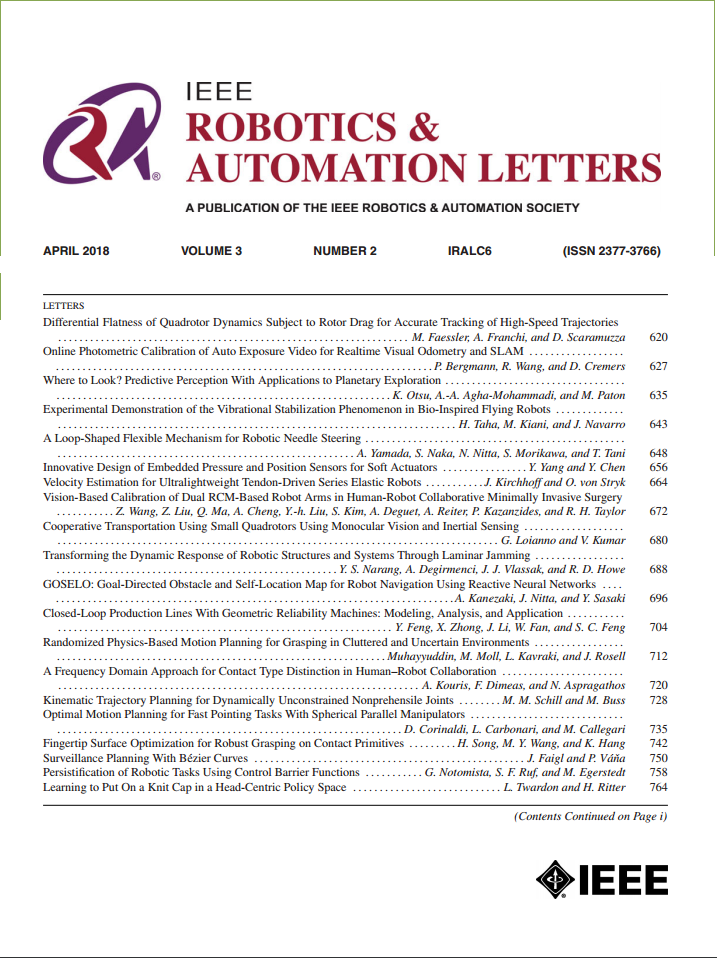TeTRA-VPR: A Ternary Transformer Approach for Compact Visual Place Recognition
IF 5.3
2区 计算机科学
Q2 ROBOTICS
引用次数: 0
Abstract
Visual Place Recognition (VPR) localizes a query image by matching it against a database of geo-tagged reference images, making it essential for navigation and mapping in robotics. Although Vision Transformer (ViT) solutions deliver high accuracy, their large models often exceed the memory and compute budgets of resource-constrained platforms such as drones and mobile robots. To address this issue, we propose一种用于紧凑视觉位置识别的三元变换方法
视觉位置识别(VPR)通过将查询图像与地理标记的参考图像数据库进行匹配来定位查询图像,使其在机器人导航和绘图中至关重要。尽管Vision Transformer (ViT)解决方案提供了高精度,但它们的大型模型通常超出了无人机和移动机器人等资源受限平台的内存和计算预算。为了解决这个问题,我们提出了TeTRA,这是一种三元变压器方法,它逐步将ViT主干量化到2位精度,并对其最终嵌入层进行二值化,从而大大减少了模型尺寸和延迟。精心设计的渐进蒸馏策略保留了全精度教师的代表性力量,允许TeTRA保留甚至超过未压缩卷积对应的准确性,尽管使用更少的资源。在标准VPR基准测试上的实验表明,与高效基准相比,TeTRA将内存消耗降低了69%,同时将推理延迟降低了35%,recall@1没有损失或略有改善。这些优点使得在功率受限、内存有限的机器人平台上实现高精度VPR,使TeTRA成为现实世界部署的一个有吸引力的解决方案。
本文章由计算机程序翻译,如有差异,请以英文原文为准。
求助全文
约1分钟内获得全文
求助全文
来源期刊

IEEE Robotics and Automation Letters
Computer Science-Computer Science Applications
CiteScore
9.60
自引率
15.40%
发文量
1428
期刊介绍:
The scope of this journal is to publish peer-reviewed articles that provide a timely and concise account of innovative research ideas and application results, reporting significant theoretical findings and application case studies in areas of robotics and automation.
 求助内容:
求助内容: 应助结果提醒方式:
应助结果提醒方式:


